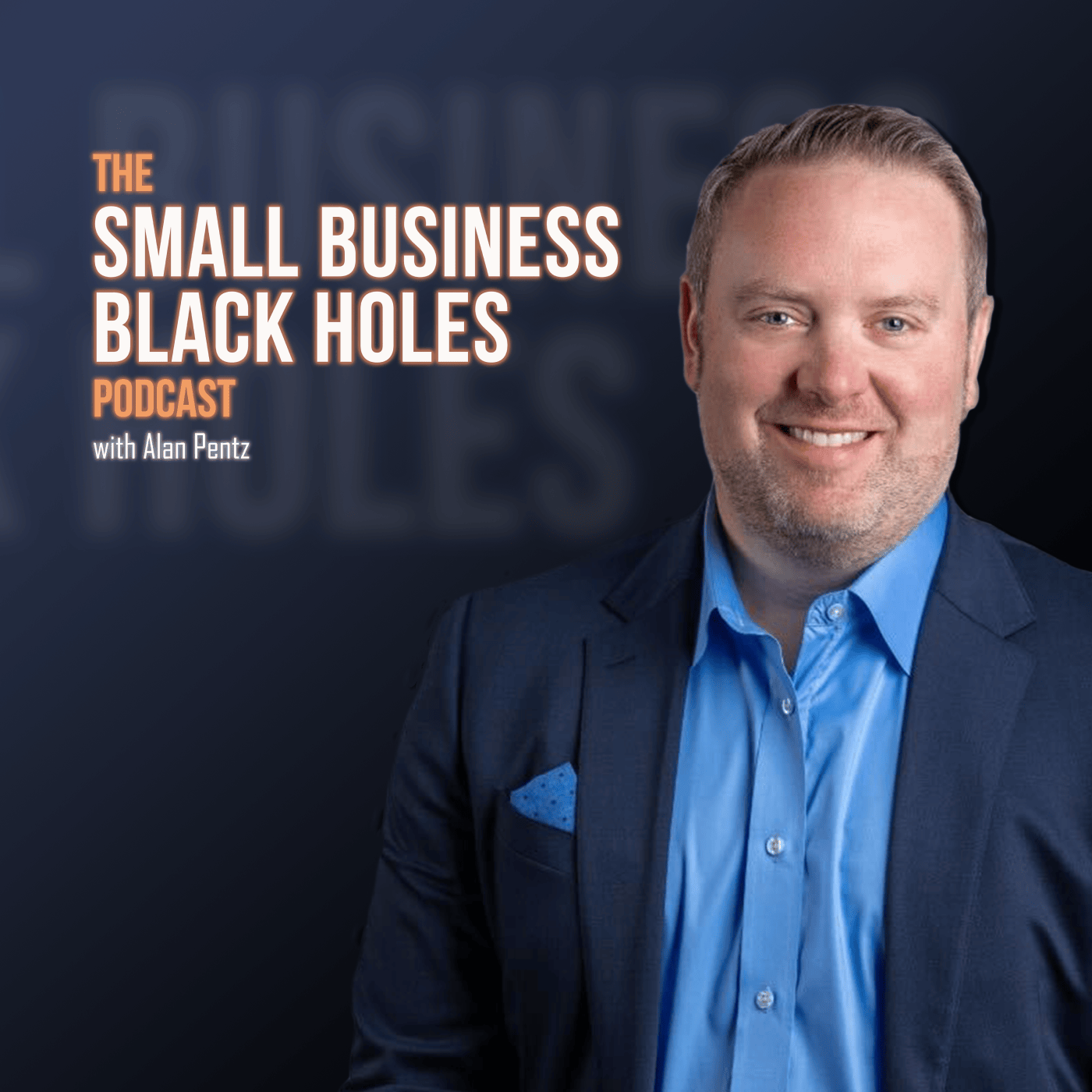From Bottleneck to Breakthrough: How Top 4% of Owners Scale Past $10M Revenue | Patrick Metzger
June 17, 2025

What if you could break through business growth plateaus while preparing for a successful exit?
In this episode of Small Business Black Holes, host Alan Pentz talks with Patrick Metzger from Growing For Success about navigating common growth challenges, implementing EOS frameworks, and leveraging AI to transform business operations. Whether you're struggling with founder bottlenecks, seeking to build transferable value, or wondering how to adapt to emerging AI technologies, this conversation delivers practical strategies for scaling your business intentionally. Tune in to discover why waiting too long to plan your exit could be your biggest mistake, and how to build a business that's both sustainable and sellable.
In this episode of Small Business Black Holes, host Alan speaks with Patrick Metzger of Growing For Success, a business coach and valuation expert, about helping business owners overcome growth barriers, prepare for successful exits, and adapt to transformative technologies like AI.
What You'll Learn:
- How to identify and break through common revenue plateaus at $1M, $2-3M, and $5M+
- Why owners become their own bottlenecks and how to transition from "doer" to true leader
- The critical steps to make your business "wanted but not needed" by its owner
- How AI is revolutionizing B2B services and why ignoring it isn't an option
- The essential elements that make a business sellable versus unsellable
- Why intentional exit planning should start years before a planned sale
- How to leverage AI tools to improve sales performance, customer service, and business operations
- The importance of derisking your business and building transferable value for eventual exit
Highlights:
[02:05] Breaking Free from Owner Bottlenecks
Patrick explains that the biggest challenge for business owners is becoming their own bottleneck by struggling to delegate and trust their team. Many founders excel at bootstrapping and sales but find these same entrepreneurial traits become limitations as the company grows beyond initial stages. The solution starts with implementing documented processes and systems that allow the business to function without constant owner involvement. A critical shift occurs when owners transition from being needed to simply being wanted in the business. This transformation requires bringing in qualified leaders and developing a strong management team that can run daily operations independently. Business owners who successfully make this transition position their companies for sustainable growth and create transferable value.
[06:38] Revenue Growth Inflection Points
Companies typically hit critical growth barriers at $1M, $2-3M, and $5M+ revenue levels, each requiring fundamental operational changes. At $1M, owners can brute force success through personal effort, but scaling to $2-3M demands building an operational infrastructure with qualified staff. The $5M+ threshold requires professionalizing sales beyond founder-led efforts and upgrading the management team. Only about 4% of small businesses break $1M in revenue, with even fewer reaching $10M, largely because owners fail to adapt their role and systems at each stage. The companies that successfully scale are those willing to make difficult changes in leadership, processes, and team composition at each inflection point.
[12:08] The AI Implementation Divide
There's a growing divide between businesses actively implementing AI and those avoiding it due to perceived complexity or time constraints. Forward-thinking companies are using AI to optimize marketing, customer service, sales analysis, and operational processes while reducing costs dramatically. The technology is advancing so rapidly that businesses ignoring AI risk being outcompeted by more efficient, AI-enabled competitors. Companies successfully adopting AI are seeing dramatic improvements in efficiency, with some replacing up to 75% of customer service teams while maintaining or improving service levels. Small business owners must prioritize learning and implementing AI despite time constraints, as it's becoming essential for competitive survival.
[24:36] Maximizing Business Value for Exit
The process of preparing a business for sale begins with conducting a thorough valuation and assessing both personal and business readiness. Successful exits require systematically derisking the business by identifying and addressing red flags that could concern potential buyers. Key focus areas include implementing robust processes, building a strong leadership team, and ensuring the business can operate independently of the owner. The transformation must include planning for the owner's post-sale life while maintaining business performance during the transition. A well-executed exit preparation process typically results in higher multiples and more interested buyers, leading to better outcomes for all stakeholders.
Episode Resources:
Alan Pentz on LinkedIn
Patrick Metzger on LinkedIn
The Greenhouse website
EOS Worldwide website
The Small Business Black Holes Podcast is handcrafted by our friends over at fame.so
Check out our three most downloaded episodes:
Check out our three most downloaded episodes: